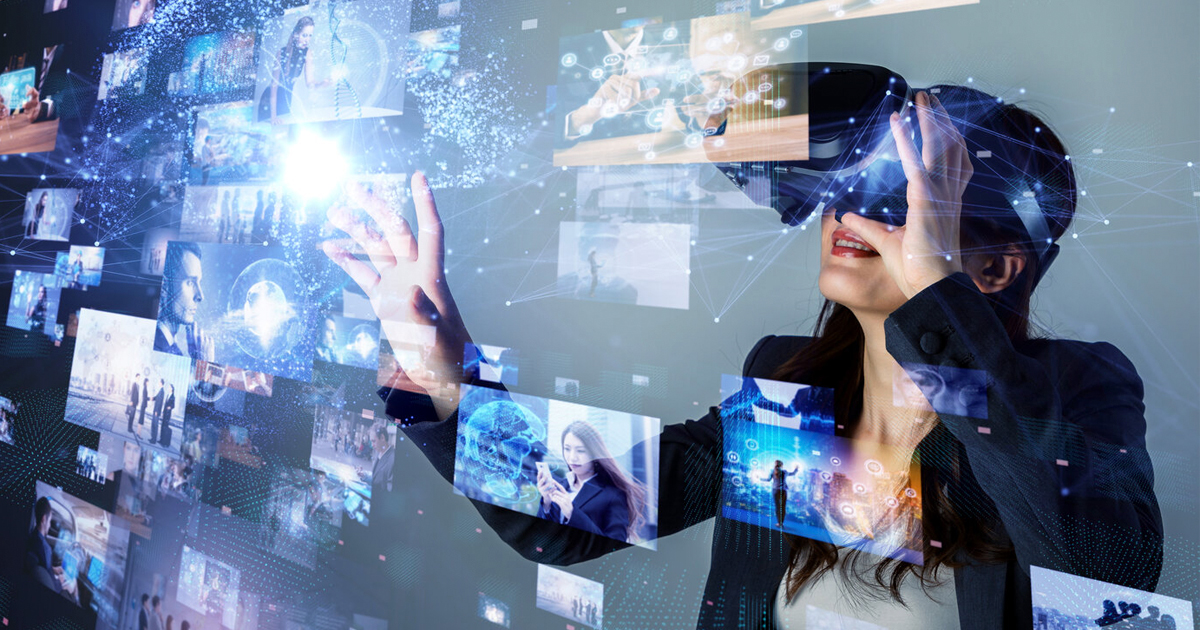The advent of virtual reality (VR) and augmented reality (AR) technologies has brought about a paradigm shift in the way we interact with digital content. These immersive technologies have the potential to revolutionize various aspects of our lives, from education and entertainment to business and healthcare. In this article, we explore the current state of VR and AR, their applications, limitations, and the exciting prospects they hold for the future.
Understanding Virtual and Augmented Reality
Definition of VR and AR: Virtual reality (VR) is a computer-generated simulation of a three-dimensional environment in which users can interact and explore, using specialized equipment such as headsets and controllers. Augmented reality (AR), on the other hand, is a technology that overlays digital information, such as images or text, onto the user’s real-world environment, typically through devices like smartphones or smart glasses.
Differences between VR and AR: While both VR and AR involve the integration of digital content with the user’s environment, the primary distinction lies in the level of immersion. VR offers a fully immersive experience, replacing the user’s real-world surroundings, whereas AR enhances the user’s existing environment with additional digital content.
Current Applications of VR and AR
Entertainment: The gaming industry has been at the forefront of VR adoption, offering immersive experiences that transport players into new worlds. Similarly, AR games like Pokémon Go have gained popularity by blending digital creatures with real-world locations. The film industry has also started to experiment with VR, providing viewers with 360-degree cinematic experiences.
Education and Training: VR and AR have transformed learning by providing immersive, interactive experiences that enable students to grasp complex concepts more easily. Medical students can practice surgeries in a risk-free VR environment, while mechanics can learn to repair engines using AR overlays that provide step-by-step instructions.
Healthcare: From diagnostics to mental health therapy, VR and AR have found their way into various healthcare applications. VR has been used for exposure therapy to treat phobias and PTSD, while AR helps doctors visualize patient data in real-time during surgeries.
Retail and Marketing: AR has gained prominence in the retail sector by allowing customers to virtually try on clothing, makeup, or furniture before making a purchase. Similarly, marketers have embraced AR to create interactive advertisements and product demonstrations.
Limitations and Challenges
Technological limitations: Despite the rapid advancements, VR and AR still face several challenges, such as limited field of view, latency issues, and resolution limitations. These factors can affect the overall user experience and hinder widespread adoption.
High cost of entry: The cost of VR headsets and AR smart glasses, as well as the computing power required to run them, can be prohibitive for many consumers and small businesses.
Privacy and security concerns: The integration of digital information with the real world raises questions about data privacy, security, and potential misuse.
The Future of VR and AR Technologies
Advancements in hardware and software: As technology continues to evolve, we can expect improvements in VR and AR hardware, such as lighter headsets, better displays, and increased processing power. This will result in more realistic and seamless experiences.
Proliferation of 5G and edge computing: The widespread adoption of 5G and edge computing will enable faster, more reliable, and low-latency VR and AR experiences, making them more accessible to users.
Integration with Artificial Intelligence (AI): AI will play a crucial role in enhancing VR and AR experiences by providing more realistic interactions, personalized content, and context-aware applications. For instance, AI-powered virtual assistants could guide users through VR training simulations or provide real-time language translations in AR environments.
Expansion into new industries and applications: As VR and AR technologies mature, we can expect them to permeate various sectors, including architecture, tourism, sports, and more. VR could be used for virtual walkthroughs of buildings before construction, while AR could provide tourists with interactive, location-based information.
Social VR and AR experiences: The future of VR and AR will see increased focus on shared, social experiences, such as virtual concerts, conferences, and collaborative workspaces. These technologies will enable users to connect and interact with others in novel ways, transcending geographical barriers.
Ethical considerations and regulation: As VR and AR become more prevalent, ethical questions will arise, such as the potential for addiction, the impact on mental health, and the blurring of lines between reality and virtual worlds. Governments and regulatory bodies will need to establish guidelines and regulations to address these concerns and ensure responsible use of the technology.
The current state of VR and AR technology showcases their immense potential to transform our lives, both personally and professionally. As hardware and software continue to evolve, and as new applications are developed, we can expect an even more immersive and connected future. However, the journey toward widespread adoption of VR and AR will require overcoming technological limitations, addressing ethical concerns, and striking the right balance between digital augmentation and real-world experiences. As we embrace the digital frontier, it is essential to remain cognizant of these challenges and work together to harness the transformative power of VR and AR technologies responsibly.
